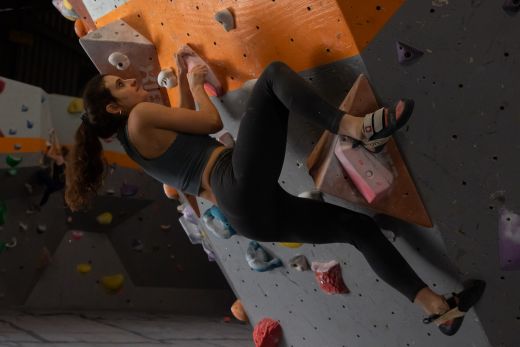Whether your goal is to develop max grip strength or power endurance, bouldering is one of the best ways to train fitness that translates directly into improved climbing performance. Besides training whole chains of muscle in a very sport-specific way, bouldering allows climbers to hone their movement skills and expand their schema. This simultaneous training of sport-specific strength and skills is so effective at producing improvement in climbing ability that renowned climbing coaches like Dave Mcleod believe bouldering is the single most important tool in training for climbing. But, there are better ways and worse ways to boulder if your aim is to actually train. In this article, I look at five of the best exercises for getting the most out of your boulder training sessions.
How is bouldering better than hangboarding?
Given its ability to isolate the forearms, hangboarding is great for producing gains in max grip strength. However, it’s not without its limitations. Hangboarding doesn’t train your weak arms positions and doesn't allow you to hone your movement skills – the area that represents the biggest opportunity for gains in climbing performance. Bouldering, on the other hand, trains all of these while also building forearm strength, albeit at a slightly slower rate. Lastly, hangboarding is something that you have to train periodically (You risk injury by sticking at it for more than 8 weeks) whereas you can boulder year round.
What’s the difference between casual bouldering and training?
The average unstructured bouldering session looks something like this: you rock up at the gym, warm up on a few easy and moderate problems, and then jump on hard problems. Then later in the session, as your energy wanes, you reduce the level of difficulty by climbing easier problems. There is actually nothing wrong with this type of session except that it you ‘re unlikely to get as much out of it as you would if your workout were more structured. By being more focussed and intentional, you could get in more work and target an ability that would make the biggest difference to your overall climbing performance.
Volume bouldering (strength)
The problem with hard bouldering is that it raises the risk of injury, which is why you don’t want to push it in every session. Volume bouldering overcomes this limitation by inducing strength gains through total workload and not through high intensity. Instead of climbing just several problems that really tax your fingers, the objective here is to do a high volume of training at moderate intensity (70 to 80% of max). For example, if V6 is your limit, your aim would be to climb several V4s and only a few V5’s. Because the focus here is training and not performing, there’s not a lot to be gained by taking five-minute rests between attempts. Keep the rests between problems to just a few minutes.
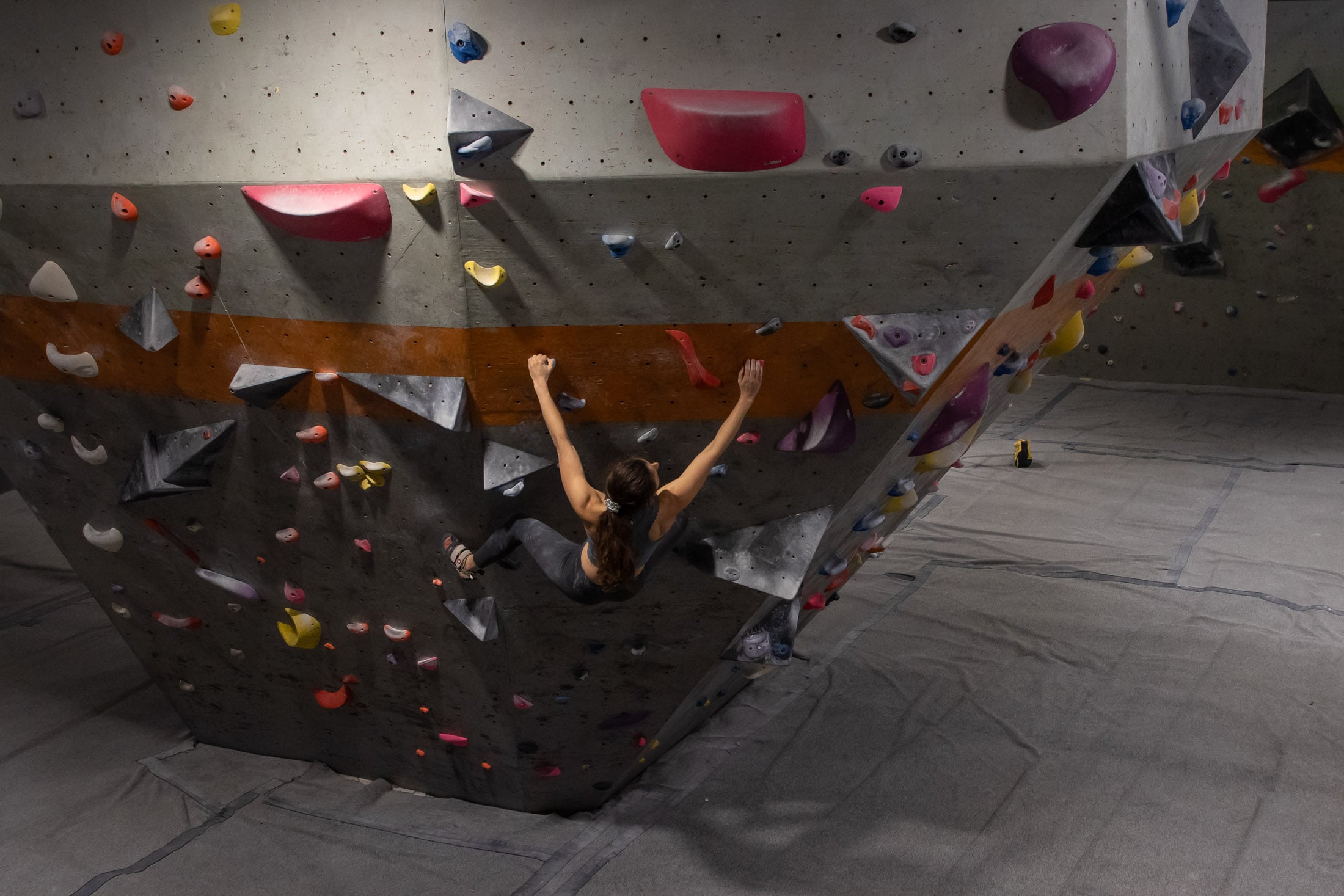
The other advantage of volume bouldering is that it involves climbing many more problems than you would in an unstructured boulder session. This makes it even more conducive to honing your movement skills. To make the most of this opportunity, you will need to go into every session with the intention of working on your form – focussing on feedback and climbing with quick accurate foot movements, using momentum, and gripping only as hard as necessary. For this purpose, it also helps to climb every problem multiple times to try different beta and figure out what is most efficient.
Limit bouldering (strength)
Once you’ve reached a certain base level of strength, the strength gains in your forearms and fingers will slow unless you start to really push the physical intensity of your training. For this purpose – to push yourself on problems close to your max – it’s hard to beat limiting bouldering on a spray wall. The limitation of pre-set problems (those set by the gym’s routesetters) is that there can be a lot of variability between problems of the same grade – some V6’s might feel a bit soft, and other will just be impossible. Limit bouldering solves this problem by allowing you to tweak problems until the difficulty is right at your limit. The process typically looks something like this.
Choose one or two starting holds low down on the spray with feet to push off. Then look for the first handhold you are going to grab. The distance, angle, and size of the hold should make the move difficult but not impossible. If you get it on your first go, it’s probably too easy. If you still can’t latch it after several attempts, you probably need to choose a different hold – one that will make the move slightly easier. Once you’ve found the right hold, repeat the process for another five or six holds, adding footholds where you need them. You ultimately want to create a sequence of several quick or dynamic moves that requires you to really bear down on holds when you make contact.
Lock-offs (strength)
The better your lock-off strength, the farther you can reach and the longer you can hold a reach. This is especially important in sport climbing, where a climber often has to lock-off to make a clip, but it can also be useful in bouldering since the same ability allows you to hold a static reach while you feel out a hold. You can, of course, train lock-off strength on a pull-up bar, but training this ability on a bouldering wall makes the exercise more sport specific. There are a few ways you can do this, but the most popular is to climb problems while locking off between moves.
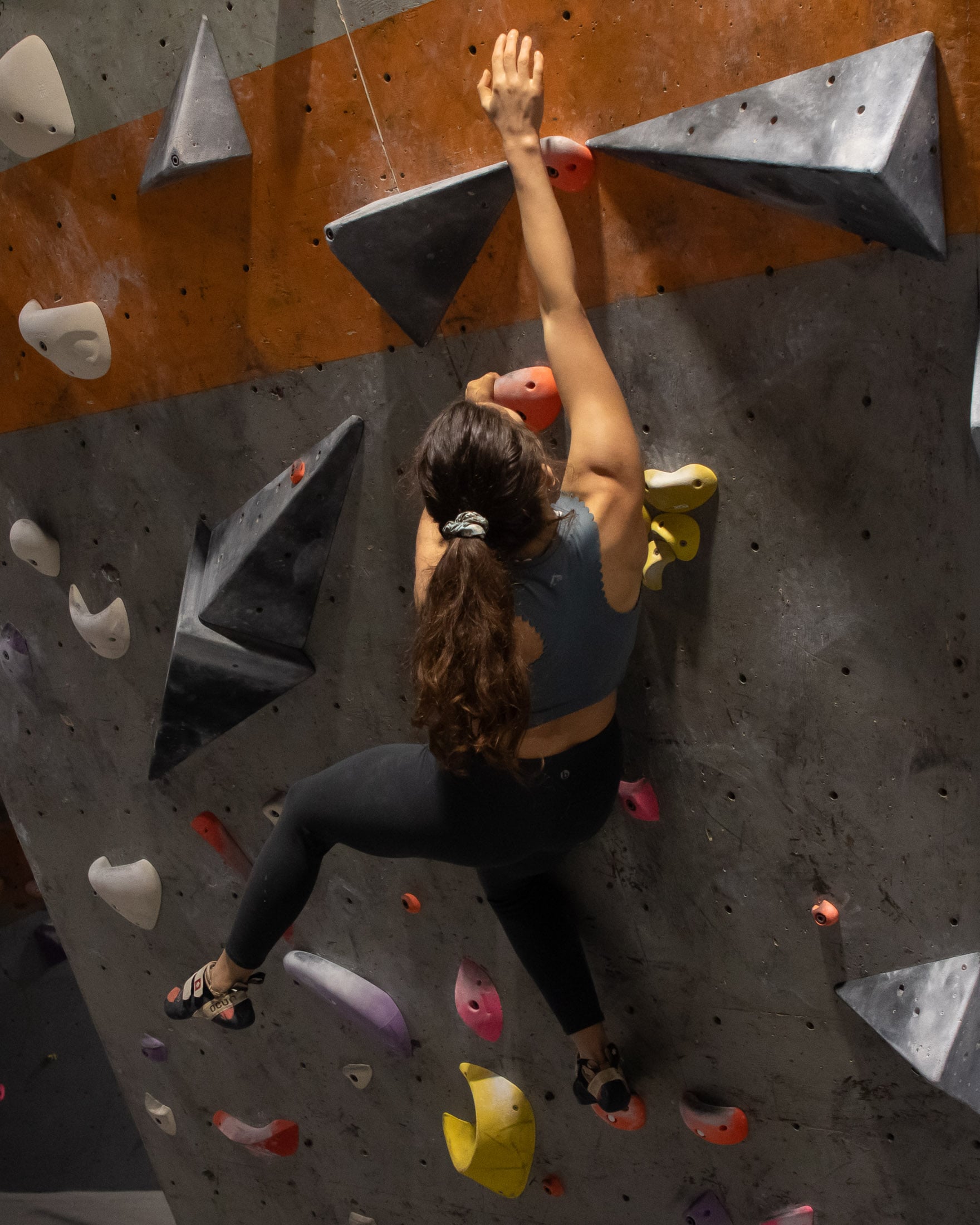
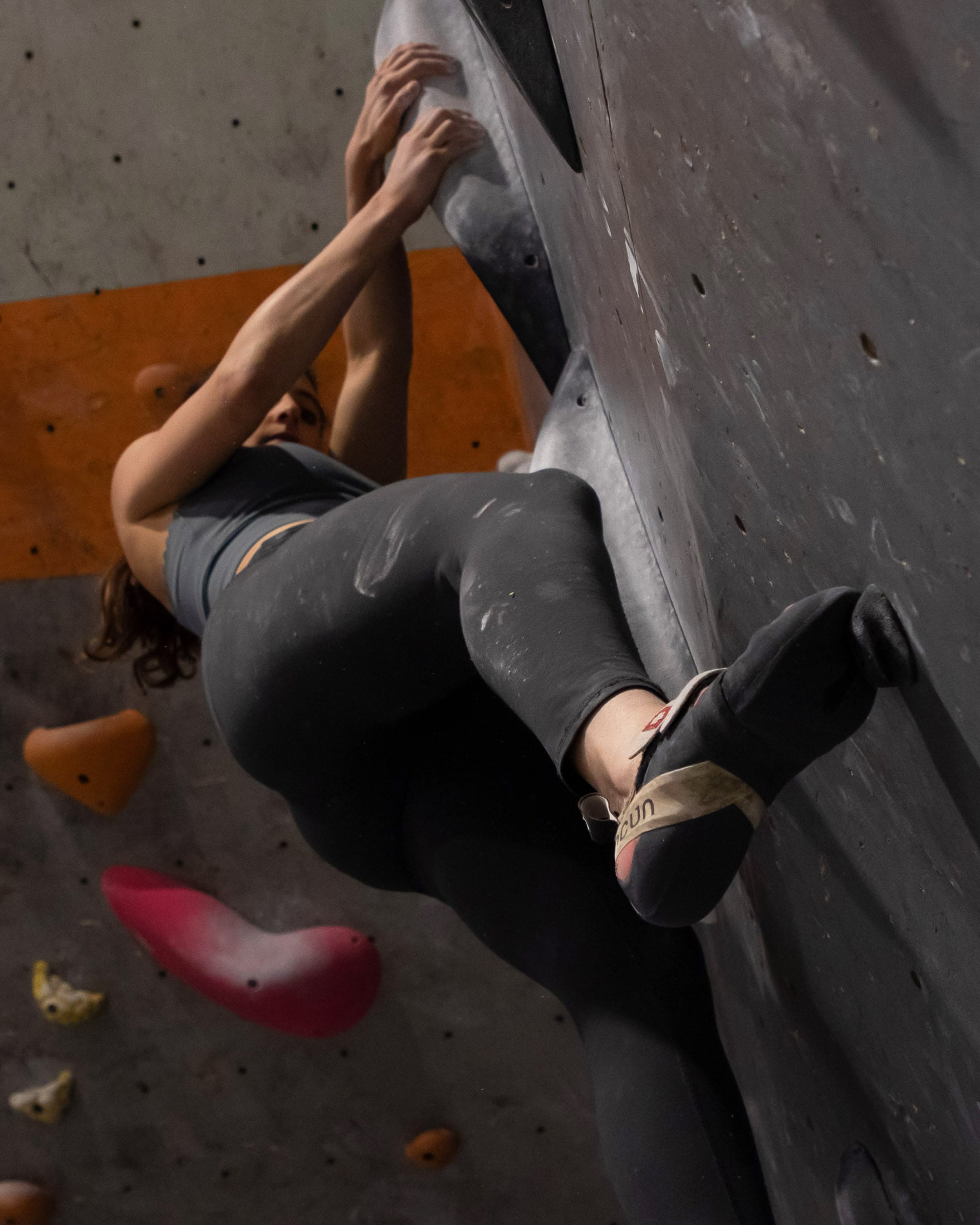
Once you’ve warmed up on several easy problems, choose a problem that feels only moderately difficult – around three or four grades below your limit – and that can be climbed more or less statically. The idea is to be able to lock off every move as you climb it, holding the reaching hand just below the next hold for three seconds. Besides working the locked-off arm, the reach should work your core and require you to maintain good body position. If you find you didn’t have to try hard to top out, down climb in the same fashion but pause before grabbing lower holds. Aim to do five problems this way with two to three-minute rests between problems.
4 x 4’s (power endurance)
On many routes, it’s not the difficulty of a single move that causes us to fail but rather the accumulative fatiguing effect of many strenuous moves. Beyond raw strength, such routes call for power endurance – the ability to pull many moderately hard moves before you get too pumped. To develop this type of fitness, one’s training has to mimic the demands, and that means climbing up to a minute, or somewhere around 30 moves, in quick succession. This can be done on a lead or top-rope route, but there are certain advantages to doing your power endurance training on a boulder wall: the first is that you don’t need a partner, and the second is that the sustained nature of the average problem lends itself to this kind of training.
With this exercise, you will choose four boulder problems of roughly the same grade – just easy enough that you can climb all four of them consecutively. This will probably be one grade below what you can flash. Climb the four problems as quickly as possible, rest for four minutes, and then climb all four in quick succession again. Ideally you will complete the first three sets and then fail on the fourth set. Progress in this exercise means gradually adding harder problems to your routine. The chosen problems should be physically hard but not so technically difficult that you’re likely to fall off because you make a mistake. When you fall off, it should be because muscles have been taxed to failure.
Boulder circuits (power endurance and endurance)
Like 4 x 4’s, boulder circuits are often used for training power endurance, but on top of that, they can also be used for training endurance. When used to train power endurance, the protocol is similar to that of 4 x 4’s except that instead of climbing the same problem four times to complete a set, you climb four different problems in quick succession. Then, after a four-minute rest, you do another set of four problems (either the same or different problems). This is followed with a third and then fourth set, each with a four-minute rest before it. In terms of difficulty, the problems in your power endurance circuit should be one grade below what you can flash.
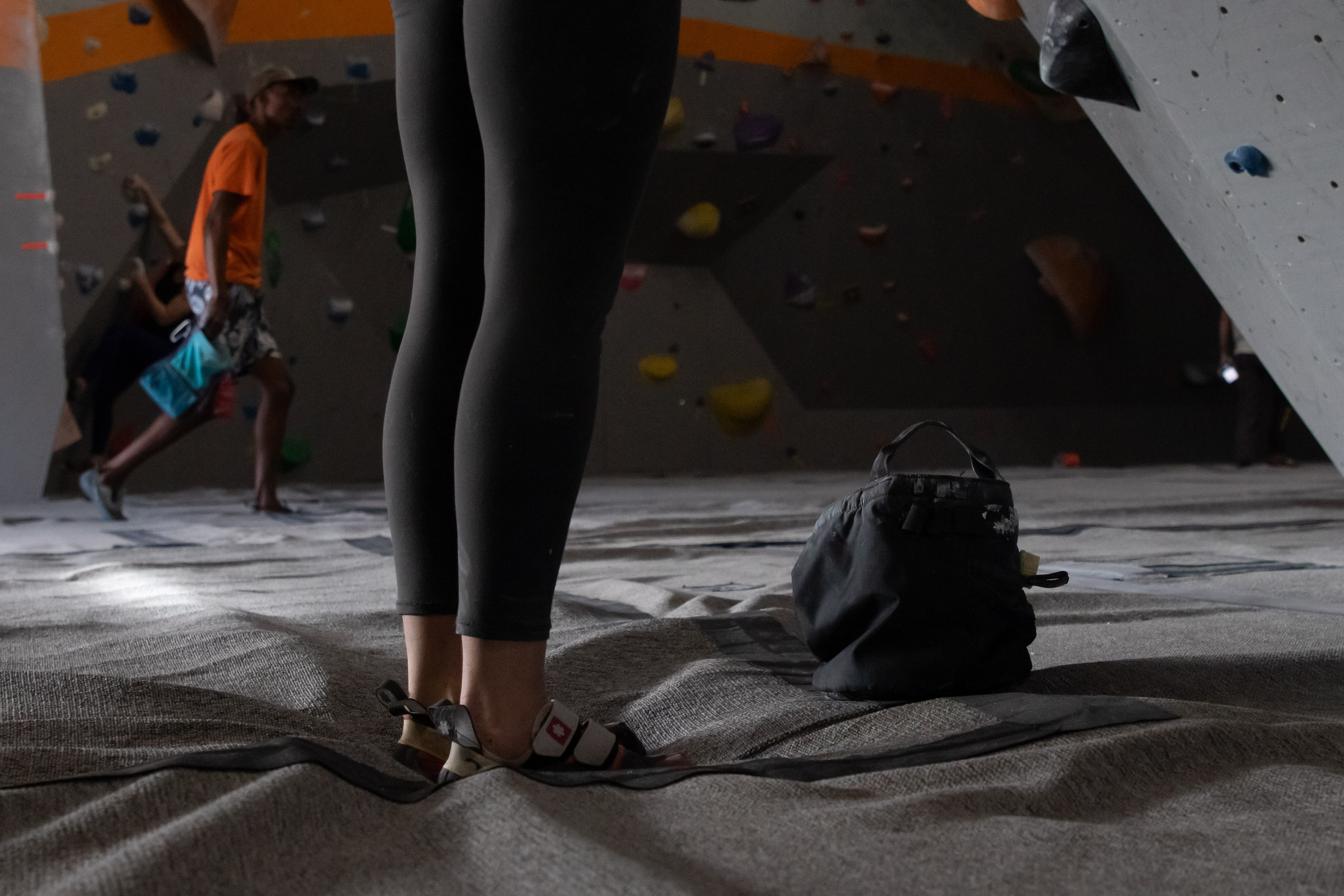
For training endurance, keep the difficulty level low and down climb after topping out a problem. In this case, your circuit would follow a zig-zagging path across the wall. I find that it’s best to try to link set problems as this will make it easier to remember the path your circuit follows, but you might have to add an extra hold here or there to keep the level of intensity low. The objective is to not get pumped but to stay just within your lactic threshold. It’s best to perform this kind of exercise when the gym is least busy.
Learn more
You now have everything you need to know about using bouldering as a training tool. But don’t stop here. On this website you’ll find many more training-related articles on everything from developing your own training program to hangboarding. Regardless of whether you are trying to send your first 5.12 or crush V7, you’re going to find something that will help you take your climbing to the next level.
